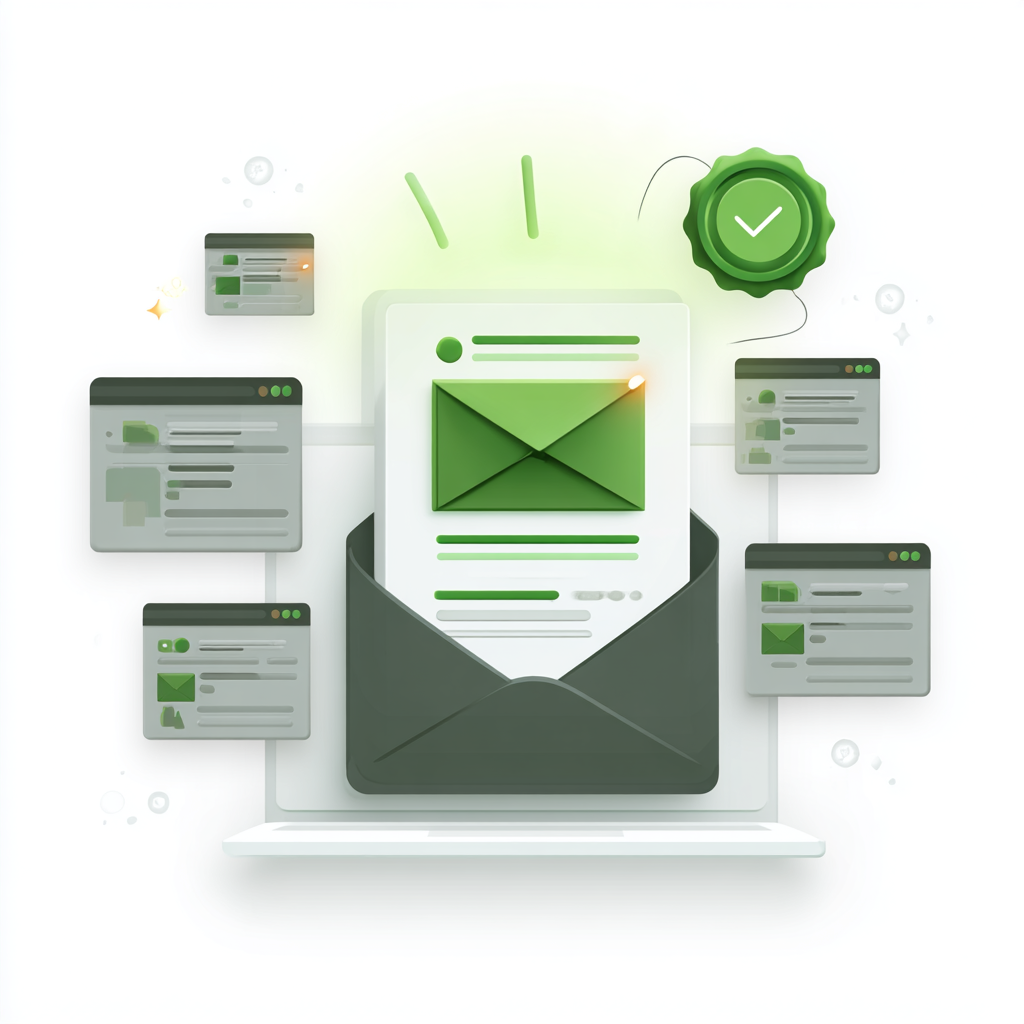Are you looking to create an email marketing campaign with high click-through and open rates? Then it would be best if you read to the end. Email marketing is vital for success in any business that relies heavily on effective email marketing. As a rule, companies experience a return of $36 for every $1 they invest in their email marketing efforts. Thus, your email campaigns’ potential return on investment (ROI) is 3600%. If you want it to succeed at this level, you must develop email campaigns to help your small business achieve its objectives.
This article will touch on creating effective email marketing campaigns to boost sales, conversion rates, and return on investment.
What is an email marketing campaign?
An email marketing campaign typically consists of several targeted and personalized messages sent to promote a business, service, or product. Sometimes, it’s just one email with a clearly defined objective. Email campaigns are often sent to those who have either granted consent to receive marketing emails from the business or have subscribed to the email list. An email marketing campaign aims to establish a rapport with the target audience and motivate them to act, like making a purchase, registering for a service, or visiting a website.
Types of email campaigns?
Businesses can utilize a variety of email marketing campaigns to accomplish their objectives. Types include some of the following:
1. Newsletters email campaigns
Email newsletters are a fantastic method of keeping readers interested and up-to-date on a brand’s latest developments, announcements, and market trends. Newsletters can include content such as videos and photographs.
2. Promotional email marketing campaigns
Promotional emails advertise a good, service, or event. They frequently provide details on a deal, discount, or special offer and can also include email announcements to debut new products. These emails have the potential to be quite successful in bringing in quick revenue and fostering client loyalty.
3. Welcome and onboarding email marketing campaigns
Onboarding or Welcome emails are sent to new subscribers to welcome them to the brand and provide an overview of its products and services. These emails offer a great chance to make an excellent first impression and can establish the tone for the subscriber’s interaction with the business.
4. Abandoned carts email marketing campaigns.
Abandoned cart emails are delivered to users who add items from the website to their online shopping cart but never check out. These emails remind prospective consumers of the items still in their cart and offer incentives like free delivery or discounts to entice them to finish the deal.
5. Re-engagement email marketing campaigns
Re-engagement email campaigns persuade dormant subscribers to reconnect with the brand. Those who last opened your emails a long time ago can receive a re-engagement mail from you. Alternatively, you may distribute them to customers who have terminated a paid subscription with your business.
How to set up a successful email campaign
1. Create a targeted email list
The bedrock of any effective email marketing campaign is a list of qualified prospects interested in your products or services. Converting website visitors into subscribers is the most significant approach to creating a targeted email list. It will be crucial for you to design eye-catching opt-in forms that entice users to subscribe. Try several email sign-up form designs on your website’s main page, blog entries, and checkout pages.
2. Define your objectives
As with any effective marketing strategy, email marketing begins with goal-setting. Think about the goals you want to accomplish with your email marketing strategy. An email marketing strategy should aim to achieve the following:
- Welcoming new subscribers and educating them about your business’s mission and core values to establish a relationship.
- Increasing interaction between your audience and your brand, whether attempting to sell anything for the first time or advertising a webinar.
- Supplying valuable content to maintain current subscribers.
- Re-engaging inactive subscribers.
- Sending targeted email marketing campaigns by segmenting your subscribers.
3. Recognize whether your campaign is transactional, relational, or promotional
Any email marketing should always feature compelling calls to action (CTAs). CTAs are links or buttons that you want your subscribers to click on. The sort of CTAs you use will depend on whether your objective is transactional, relational, or promotional:
- Promotional: If you intend to promote a good or service, your call to action (CTA) could be a button that activates a coupon code or a link to a product page.
- Relational: If you wish to strengthen your bond with your subscribers through your campaign. They ought to captivate users and fulfill your stated benefits. For example, links to the week’s top posts could be included in an email CTA from a blog.
- Transactional: Subscribers anticipate receiving transactional emails, the foundation of eCommerce customer support. These include order confirmations and email sign-up confirmations. Purchase confirmations should always include a call to action to check the order details.
4. Recognize your audience
If you have experience with email marketing, you probably have a good idea of your target market. However, if you are starting, you will need to conduct some research to target the content of your emails. From the moment you send your first campaign, you will begin to gather subscriber information, giving you accurate data to work with next time. You can also collect information from Google Analytics and your social media accounts.
5. Make use of technology
Top email service providers offer resources to help you create more effective email marketing campaigns. When choosing the right service provider, look for characteristics such as:
- Simple drag-and-drop campaign creation.
- Features include workflows, templates, and automation.
- Interfaces with programs you are already familiar with, such as WordPress, etc.
- Strategies for audience segmentation.
- Comprehensive analytics on the performance of email campaigns.
6. Plan emails and reminders
Once you have determined your audience, goals, and call to action, it’s time to prepare your email marketing campaign. Email is essential to your digital marketing plan, so you should approach it methodically. A few things to consider are as follows:
- Email frequency.
- The kinds of emails you will send
- An idea of your content
- The primary action you desire your subscribers to perform (e.g., purchasing a product, attending an event, or following you on social media)
- Emails should be relevant, timely, engaging, and valuable.
7. Create a catchy subject line
The subject line is a fantastic place to start for every successful email marketing campaign because it greatly encourages users to open and click on your emails. An email subject line needs to grab attention to entice readers to read on, just like the title of your blog post. Your email subject line should be brief.
According to Campaign Monitor data, most subject lines are between 41 and 50 characters. Starting with the most essential parts of your subject line makes sense because even less of this number will appear on mobile screens. Among the best ways to make your subject lines catchy are:
- Describe to recipients what they can expect from your emails.
- By adding personalization, including putting people’s names in the topic line, etc.
- Avoiding spam trigger words to ensure that your emails arrive in the inbox.
8. Write the draft
Start your writing with a hook that will entice readers to continue reading. For best results, keep email marketing copy brief and refrain from making an early pitch of your offer. Write in a friendly, kind tone and address each subscriber by name. Compose as if you were speaking to someone else. Other things to think about for your email copy are as follows:
- A personal story. Being human never harms a business and frequently facilitates emotional connections. Some of the most effective emails use this strategy.
- Something your readers will find valuable. That could be a piece of writing, helpful information, or the resource you’re pushing.
- A survey, GIF, video, or poll increases reader engagement.
- Finally, your email marketing copy should include a call to action (CTA). After reading your email, what you want individuals to do is reflected in your call to action (CTA)—short and clear calls to action work best.
9. Pay attention to email marketing design
Having bad-looking emails reflects poorly on you and may cause readers to quit. Using a flexible email template is essential since more people than ever are reading emails on mobile devices. This ensures that your email adjusts to the screen size of the recipient, whether they are on a laptop, tablet, or phone.
10. Test and track
Lastly, sending emails is the beginning of a successful email marketing campaign. To succeed, you must gather information to improve upcoming marketing campaigns. This includes A/B testing of every element, including calls to action, subject lines, email marketing copy, and design and layout. Think about experimenting with email send times and testing emails with various segments.
Conclusion
A strong email list is the key to a successful email marketing campaign. Using sound technology solutions can make the process of building and managing your email list easy. A good email list allows you to send personalized and relevant messages to your audience. This helps you connect better with your subscribers, increasing engagement and customer loyalty.
Building and maintaining a solid email list and using technology and data are vital to successful email marketing campaigns. These efforts will help ensure your campaigns are well-received and drive business growth and customer loyalty.





